Metal pipes have been around since the 1930s, and while briar pipes make up the overwhelming majority of smoking pipes, metal pipes, made famous by the makers of Falcon and Kirsten pipes, have a strong following. Part of the success of metal pipes is their light weight and interchangeable bowls, which can be made from briar, meerschaum, morta (bog oak) or other alternative woods.
The pipe on the bench today came into the shop from a gentleman in Nova Scotia, Canada who had inherited the pipe from his grandfather. As you can see in this initial series of images, the pipe needed some TLC to bring it back to top shape after sitting unused for some time. The aluminum body was dull and dirty, the screw-in briar bowl was dented and carried a layer of carbon over the rim, and the Vulcanite stem had broken off just about the threaded tenon.
Unusual for a metal pipe, there was a noticeable lack of stamps or other markings on the aluminum body, bowl or stem. Also unusual was that this pipe was set up to accept a Medico style paper filter in the shank. It was this combination of characteristics that allowed me to ultimately uncover the pipe’s likely origins. A search through the listings on SmokingMetal.co.uk proved very helpful, identifying the pipe as an Arcadia air-cooled filter pipe. Likely dating to the 1940s, the Arcadia seems to be an American design manufactured in London, England.
With that little mystery cleared up, I moved on to the restoration work. First up was to get the pipe clean. My first attempt at cleaning the airway hit a literal roadblock, which turned out to be the remains of an old paper filter that had gotten jammed into the shank. I manage to extract it, then used a touch of 99% isopropyl alcohol to loosen the remains of the stem stuck onto the threaded tenon. This pic shows the pipe stripped down to its components.
The cup under the crew-in bowl was caked with tarry residue. This is actually by design, as the air space under the briar bowl acts as a condensing chamber. During use, the hot moisture produced by combustion hits the relatively cool aluminum cup and condenses into tarry water droplets.
Thankfully, a bit more alcohol and a handful of cotton swabs and pipe cleaners softened and removed the deposits from the cup and airway.
Hiding under the tars was a makers mark. Unfortunately, I have not been able to trace the mark to a maker, though I suspect it indicates the company that cast the aluminum bodies rather than the Arcadia brand.
A scrub with clean 0000 steel wool removed a surprising amount of surface dirt and dust while also smoothing out the worst of the handling marks.
With the aluminum pipe body ready to go, I turned my attention to the bowl. A bit of sandpaper removed a light layer of carbon cake from the chamber, while a bit more steel wool removed the carbon crust from the rim of the bowl. I smoothed out the dents seen in the original images above by lightly topping the bowl before touching up the finish with a matching stain pen. This pic shows the bowl after cleanup.
Finally, it was time to fit a new Vulcanite stem. The original round saddle stem was, thankfully, a fairly standard size and I had a suitable Vulcanite stem blank in stock. This pic shows the new stem above the broken original.
To fit securely onto the threaded tenon, the stem face needed to be drilled and tapped with what turned out to be 10mm x 1 metric threads. This small stem fit well inside the chuck on my lathe, which made the job much easier. After cutting off the molded tenon, I drilled the stem face with the appropriate pilot bit and followed with the tap.
Some fine adjustments were needed to get the threads cut deeply enough to seat the new stem against the shank face, but as this pic shows, I got there in the end.
The new stem was slightly larger in diameter than the shank of the pipe, so after taping off the shank to protect it during the work, I filed and sanded the new stem to fit.
When I was happy with the shank-to-stem transition, I sanded the Vulcanite to 2000-grit.
Then it was time to bring all of the component parts of the pipe to the buffer for final polishing. The briar bowl and Vulcanite stem got a run on the regular Red Tripoli and White Diamond wheels, while I polished the aluminum pipe body on a separate wheel using just the Tripoli compound. A dedicated metal buffing wheel is highly recommended as the small amounts of metal removed by the compound turn the wheel black very quickly. The metal debris can also potentially scratch softer materials and make more work for the restorer.
With all the parts cleaned and polished, I reassembled the pipe and gave it a light coat of Carnauba wax to protect the revived finish and add shine to the briar and Vulcanite.
The revived Arcadia pipe is looking great after its time on the bench. The tired, dull looking pipe that came into the shop has been transformed, and while the aluminum still carries some of its handling marks (well earned after 80 or so years of service), the pipe is clean, fresh and whole again, ready to provide another generation of pipe smoker with faithful service for many years to come.
I hope you enjoyed following along on this estate pipe overhaul. Until next time, Happy Piping! Here’s the finished pipe.


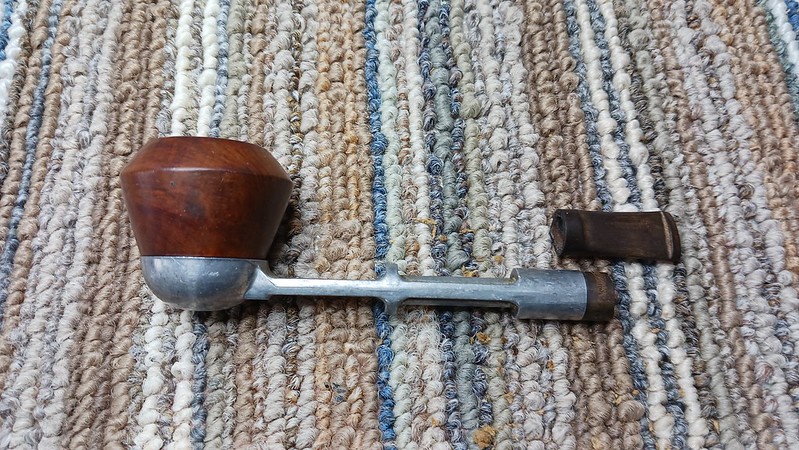

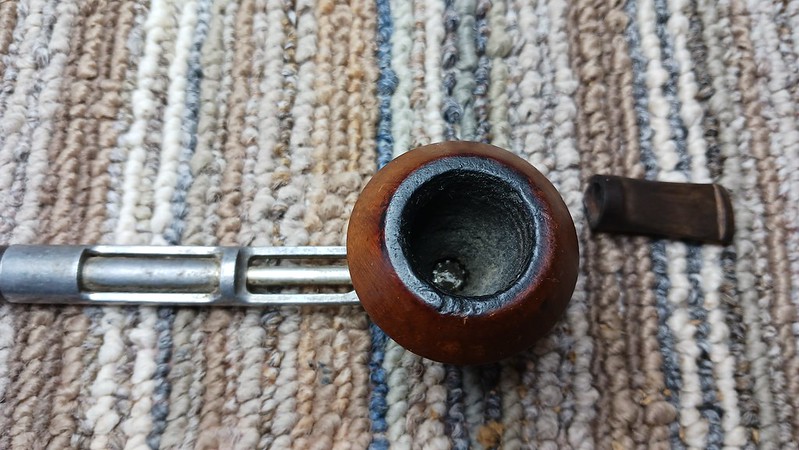

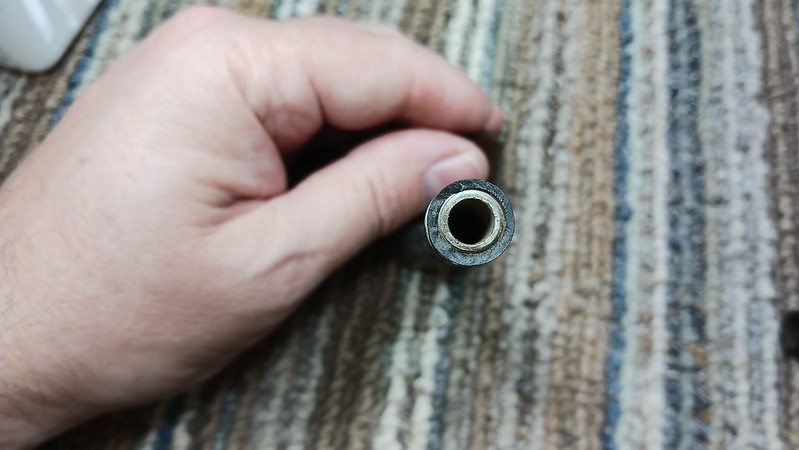

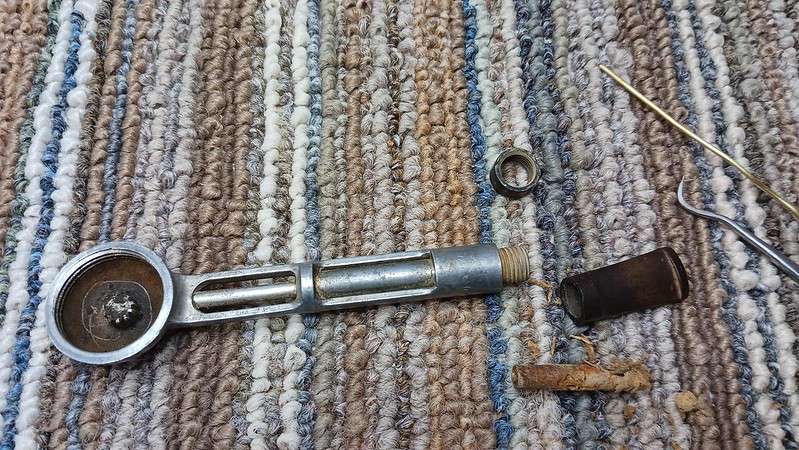

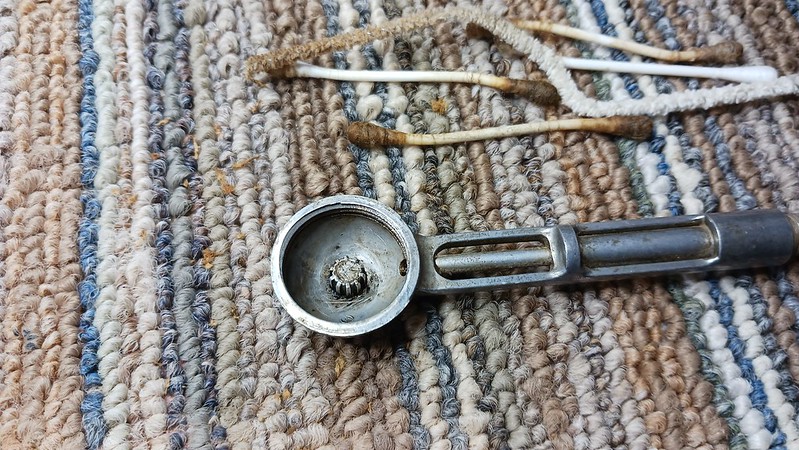
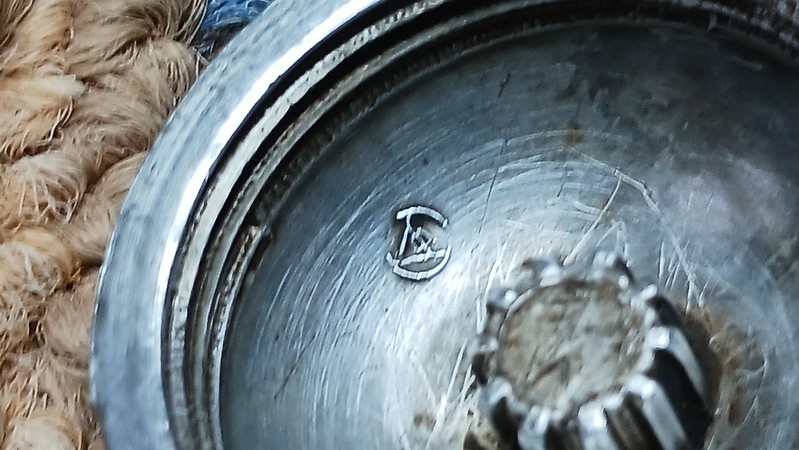
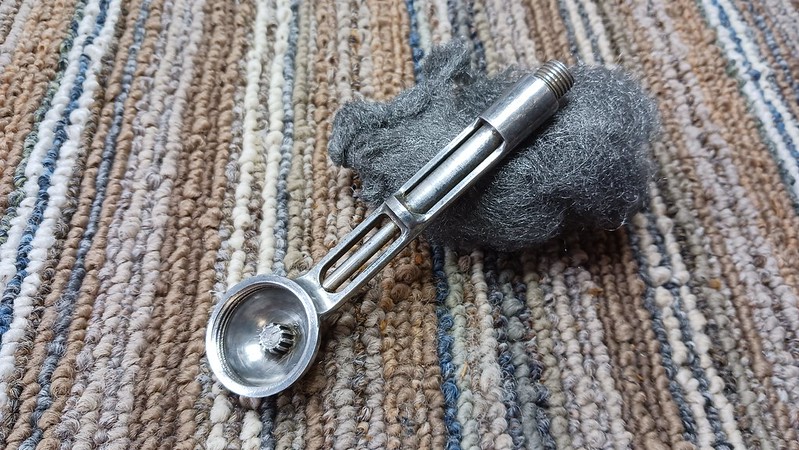
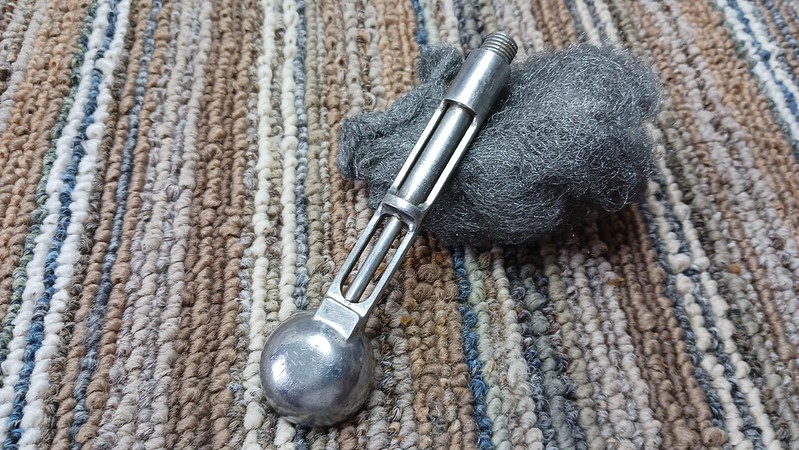


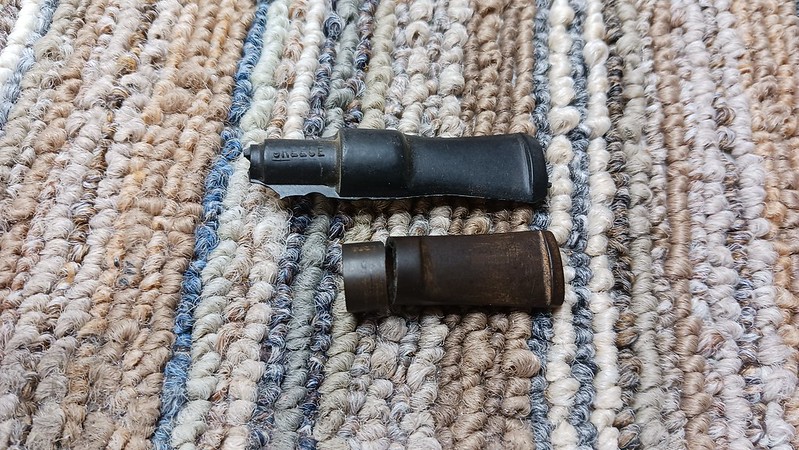
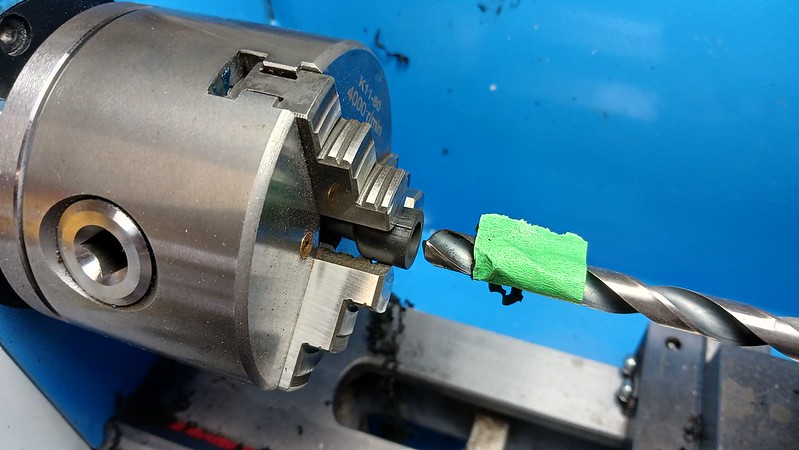



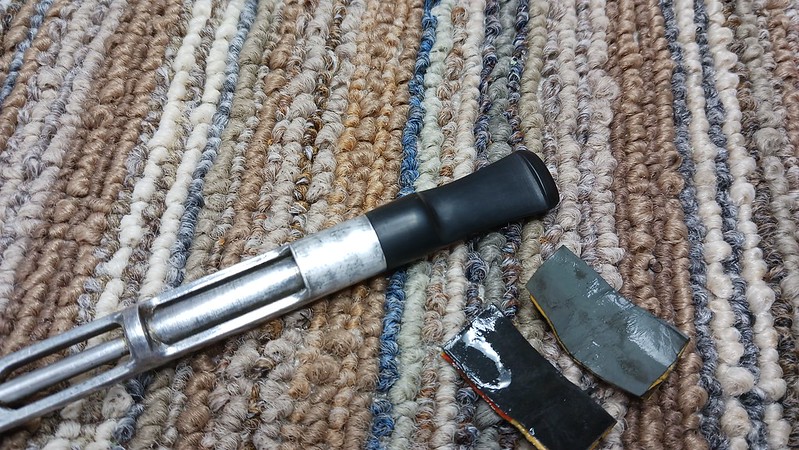

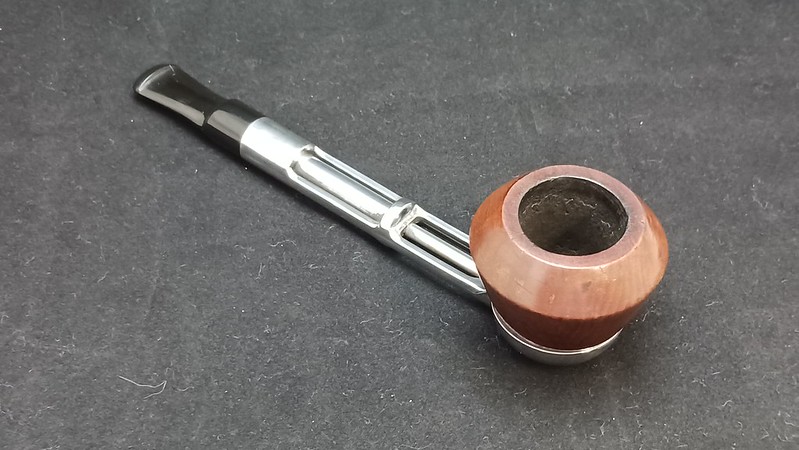

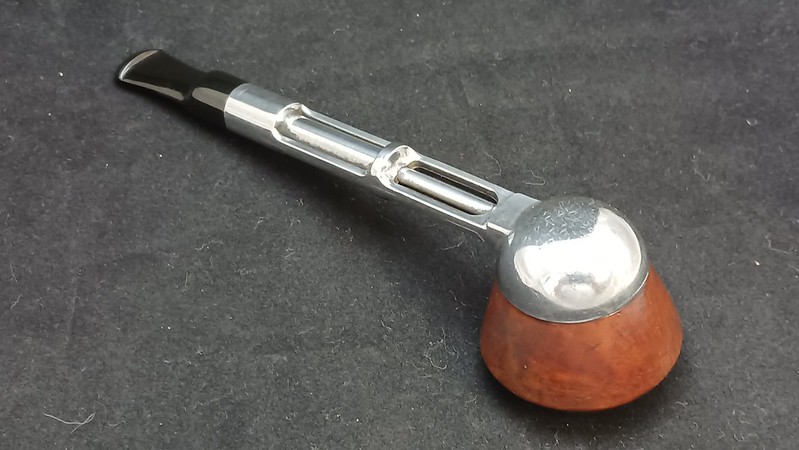
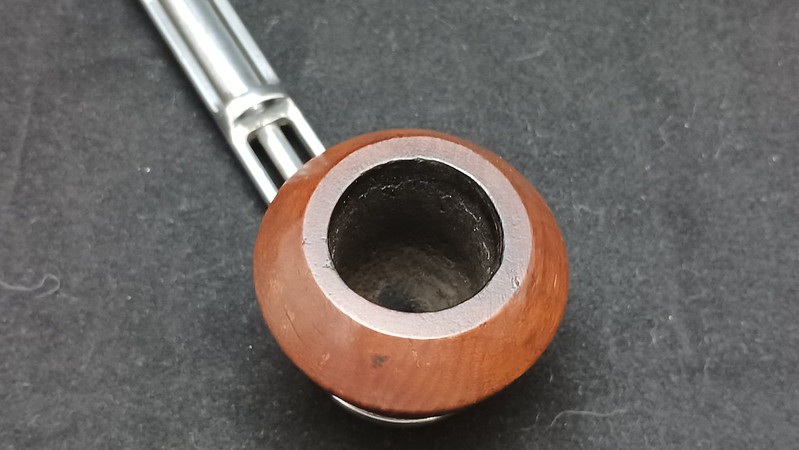
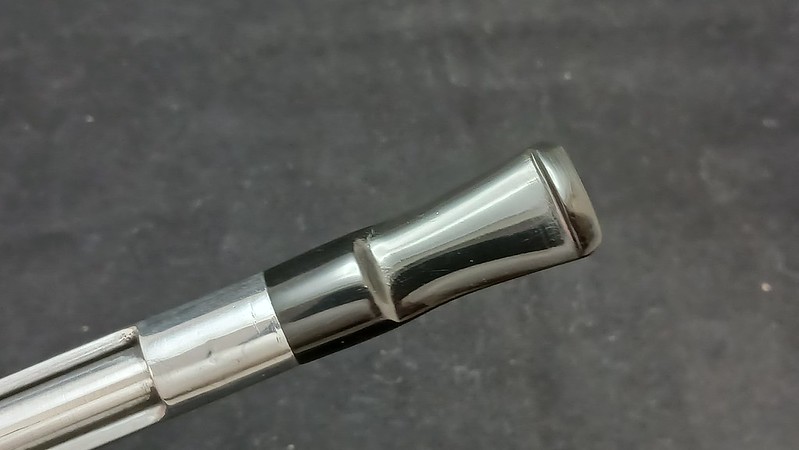
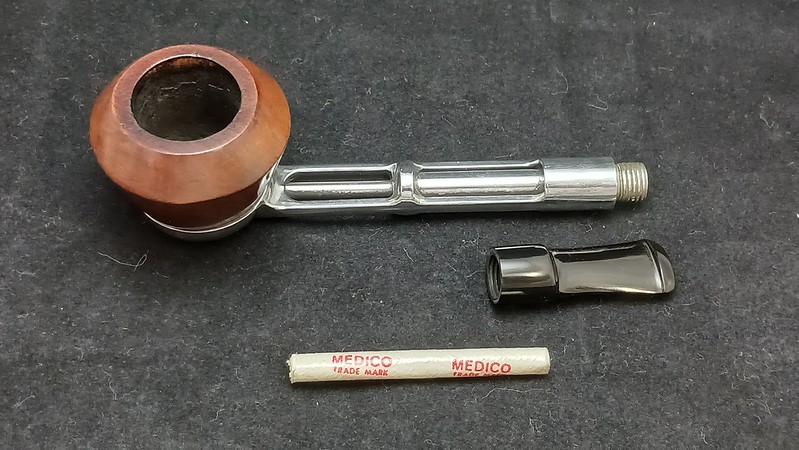
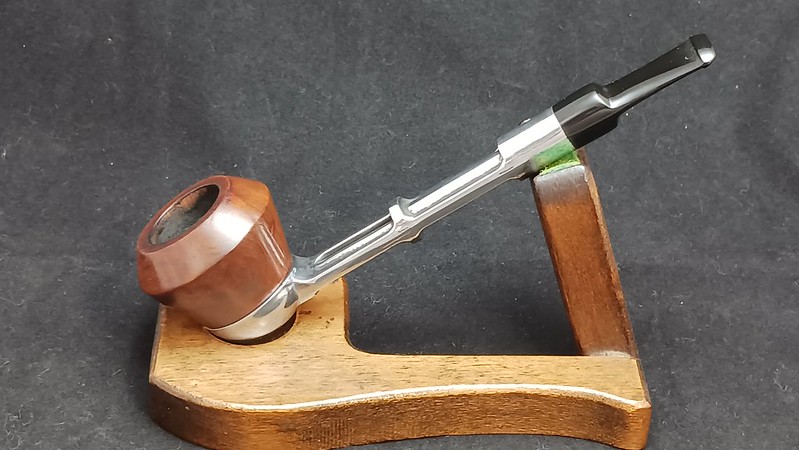
Very nice work Charles. I am curious how the stem managed to happily seat itself at just the right clock position, being threaded. A few years ago I acquired a Brysons metal pipe, perhaps I’ll dig that out now. I believe the bowl is made of highly compressed briar dust, kinda like MDF I’m thinking. Thanks for the inspiration Charles. Sincerely,
Mike
LikeLike
Getting a threaded fitting to line up properly can be a bit of a challenge. In this case, I’d test fit the stem on the threads, then cut a few more threads if the stem sat proud. Eventually things lined up correctly.
LikeLike